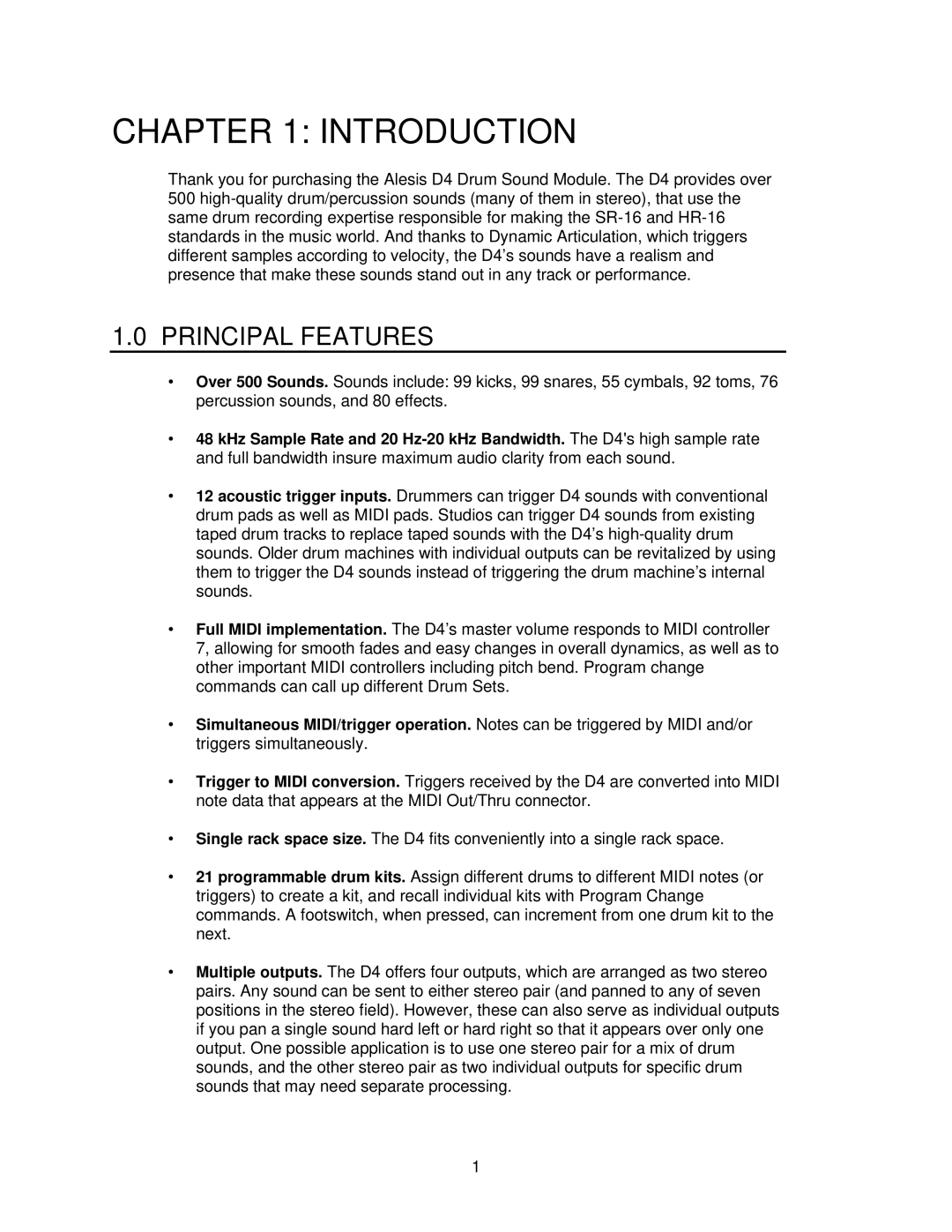CHAPTER 1: INTRODUCTION
Thank you for purchasing the Alesis D4 Drum Sound Module. The D4 provides over 500
1.0PRINCIPAL FEATURES
•Over 500 Sounds. Sounds include: 99 kicks, 99 snares, 55 cymbals, 92 toms, 76 percussion sounds, and 80 effects.
•48 kHz Sample Rate and 20
•12 acoustic trigger inputs. Drummers can trigger D4 sounds with conventional drum pads as well as MIDI pads. Studios can trigger D4 sounds from existing taped drum tracks to replace taped sounds with the D4’s
•Full MIDI implementation. The D4’s master volume responds to MIDI controller 7, allowing for smooth fades and easy changes in overall dynamics, as well as to other important MIDI controllers including pitch bend. Program change commands can call up different Drum Sets.
•Simultaneous MIDI/trigger operation. Notes can be triggered by MIDI and/or triggers simultaneously.
•Trigger to MIDI conversion. Triggers received by the D4 are converted into MIDI note data that appears at the MIDI Out/Thru connector.
•Single rack space size. The D4 fits conveniently into a single rack space.
•21 programmable drum kits. Assign different drums to different MIDI notes (or triggers) to create a kit, and recall individual kits with Program Change commands. A footswitch, when pressed, can increment from one drum kit to the next.
•Multiple outputs. The D4 offers four outputs, which are arranged as two stereo pairs. Any sound can be sent to either stereo pair (and panned to any of seven positions in the stereo field). However, these can also serve as individual outputs if you pan a single sound hard left or hard right so that it appears over only one output. One possible application is to use one stereo pair for a mix of drum sounds, and the other stereo pair as two individual outputs for specific drum sounds that may need separate processing.
1
